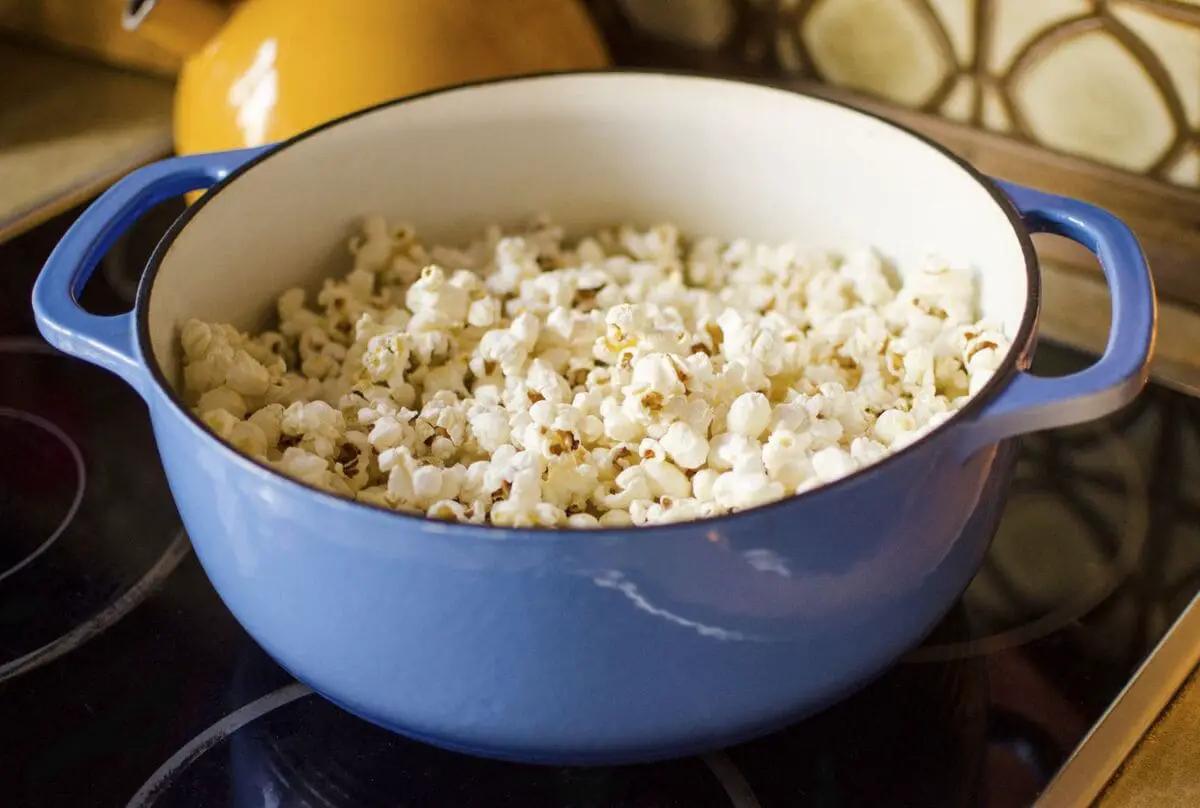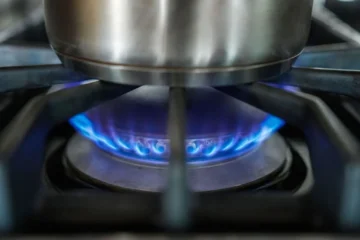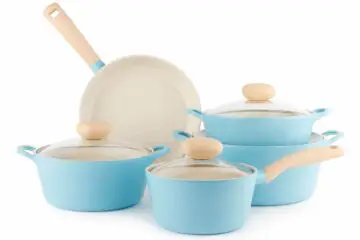Popcorn is a beloved snack that can be enjoyed in many different ways. One of the classic methods of making popcorn is on the stove. While popping popcorn on the stove may seem intimidating, it is actually a simple process that can be done with just a few ingredients and some basic equipment.
To make popcorn on the stove, you will need a heavy pot with a lid, oil, popcorn kernels, and any desired seasonings. The type of oil used is important, as it needs to have a high smoke point to prevent burning. Canola, vegetable, grapeseed, and sunflower oil are all good options. Once the popcorn is popped, it can be seasoned with salt, butter, or any other desired toppings. With a little bit of practice, anyone can make delicious popcorn on the stove.
Choosing the Right Pot
When it comes to popping popcorn on the stove, choosing the right pot is crucial. Here are a few factors to consider when selecting a pot:
Size
The pot should be at least 3-4 quarts in size to accommodate the popcorn kernels as they pop. A pot that is too small can result in unpopped kernels or burnt popcorn.
Material
A heavy-bottomed pot is ideal for even heat distribution and preventing burning. Stainless steel, aluminum, and cast iron are all good options. Non-stick pans are not recommended as they can release harmful chemicals when heated.
Lid
A tight-fitting lid is essential to prevent popcorn from flying out of the pot and to keep the heat inside. A glass lid is useful for monitoring the popping process without having to remove the lid.
Handles
Sturdy handles that are heat-resistant are important for safely handling the pot during the popping process. Silicone or metal handles are good options.
Selecting the Right Oil
When it comes to popping popcorn on the stove, selecting the right oil is crucial. The oil not only affects the taste of the popcorn but also the texture and color. Here are some of the best oils to use when popping popcorn on the stove:
1. Coconut Oil
Coconut oil is a popular choice for popping popcorn on the stove. It has a high smoke point, which means it can withstand high temperatures without burning. Coconut oil also adds a sweet, nutty flavor to the popcorn.
2. Canola Oil
Canola oil is another great option for popping popcorn on the stove. It has a neutral flavor, which means it won’t affect the taste of the popcorn. Canola oil also has a high smoke point, making it ideal for high-temperature cooking.
3. Vegetable Oil
Vegetable oil is a versatile oil that can be used for a variety of cooking methods, including popping popcorn on the stove. It has a mild flavor, which means it won’t overpower the taste of the popcorn. Vegetable oil also has a high smoke point, making it ideal for high-temperature cooking.
4. Peanut Oil
Peanut oil is a flavorful oil that is often used in Asian cuisine. It has a high smoke point, making it ideal for popping popcorn on the stove. Peanut oil also adds a nutty flavor to the popcorn.
It’s important to note that some oils, such as olive oil, are not ideal for popping popcorn on the stove. Olive oil has a low smoke point, which means it can burn at high temperatures and affect the taste of the popcorn. When selecting an oil, it’s best to choose one with a high smoke point and a neutral or complementary flavor to the popcorn.
Preparing the Kernels
When it comes to popping popcorn on the stove, the first step is to prepare the kernels. This section will cover how to measure the kernels, add oil, and salt.
Measuring the Kernels
To start, measure out the desired amount of popcorn kernels. A general rule of thumb is to use 1/4 to 1/3 cup of kernels per batch, depending on the size of the pot. For a 5-inch deep, 9-inches across pot, 1 cup of popcorn kernels is perfect.
Adding Oil
Once the kernels are measured, add enough oil to the pot to cover the bottom. Use an oil that has a high smoke point, such as canola, grapeseed, sunflower, or another vegetable oil. If using coconut oil, allow all of the solid oil to melt first.
Adding Salt
If desired, sprinkle in a bit of sea salt to the pot. It is recommended to add salt after the popcorn has popped to prevent burning.
Popping the Kernels
When it comes to popping popcorn on the stove, there are a few key steps to follow in order to achieve that perfect, fluffy snack. Here are the three sub-sections to keep in mind: Heating the Pot, Shaking the Pot, and Removing from Heat.
Heating the Pot
To start, choose a heavy-bottomed pot with a tight-fitting lid. Add enough oil to cover the bottom of the pot, but not so much that the popcorn will be swimming in it. You want enough oil to coat the kernels evenly.
Turn the heat to medium-high and let the oil heat up. To test if the oil is hot enough, add three popcorn kernels to the pot. When those kernels pop, you know the oil is ready.
Shaking the Pot
Once the oil is hot and the kernels are added, it’s important to shake the pot gently to prevent burning. You can do this by holding the lid with one hand and the pot handle with the other, and moving the pot back and forth over the heat source. This will help to ensure that all of the kernels pop evenly.
Removing from Heat
When the popping slows down to a few seconds between pops, it’s time to remove the pot from the heat. Be careful when removing the lid, as steam will escape and can burn your hand.
Carefully pour the popcorn into a large bowl, and season with salt or any other desired toppings. Enjoy your freshly popped snack!
Remember, popping popcorn on the stove takes a bit of practice and patience, but with these simple steps, you’ll be a pro in no time.
Seasoning the Popcorn
After popping the popcorn on the stove, it’s time to add some flavor. There are a few different ways to season popcorn, including using butter and salt or flavored seasonings.
Butter and Salt
One classic way to season popcorn is with butter and salt. Melt some butter in a small saucepan or in the microwave, then drizzle it over the popcorn and toss to coat. Sprinkle with salt to taste. For a healthier option, use a butter substitute or skip the butter altogether and just use salt.
Flavored Seasonings
There are many different flavored seasonings that can be used to add some variety to popcorn. Here are a few ideas:
- Parmesan cheese: Grate some fresh Parmesan cheese and sprinkle it over the popcorn.
- Garlic powder: Mix some garlic powder with melted butter and toss with the popcorn.
- Cinnamon sugar: Mix some cinnamon and sugar together and sprinkle over the popcorn.
- Ranch seasoning: Sprinkle some ranch seasoning mix over the popcorn for a savory flavor.
- Taco seasoning: Toss the popcorn with some taco seasoning for a spicy kick.
When using flavored seasonings, it’s important to make sure they are evenly distributed over the popcorn. Toss the popcorn well to ensure that every kernel is coated with the seasoning.
Conclusion
In conclusion, popping popcorn on the stove is a simple and cost-effective way to enjoy this classic snack. With just a few ingredients and some basic kitchen equipment, anyone can make delicious popcorn at home.
One of the advantages of popping popcorn on the stove is that it allows for greater control over the cooking process. By adjusting the heat and timing, you can achieve the perfect level of crispiness and flavor. Additionally, making popcorn on the stove is a great way to avoid the additives and preservatives often found in store-bought microwave popcorn.
When it comes to choosing the right type of oil, there are a variety of options available. While some people prefer the taste of coconut oil or ghee, others may opt for more neutral oils like canola or vegetable oil. It’s important to note that different oils have different smoke points, so it’s best to choose an oil that can withstand high heat without burning.
Overall, popping popcorn on the stove is a fun and easy activity that can be enjoyed by individuals of all ages. Whether you’re looking for a quick snack or a fun activity to do with friends and family, making popcorn on the stove is a great option. So next time you’re craving some popcorn, why not give it a try?




